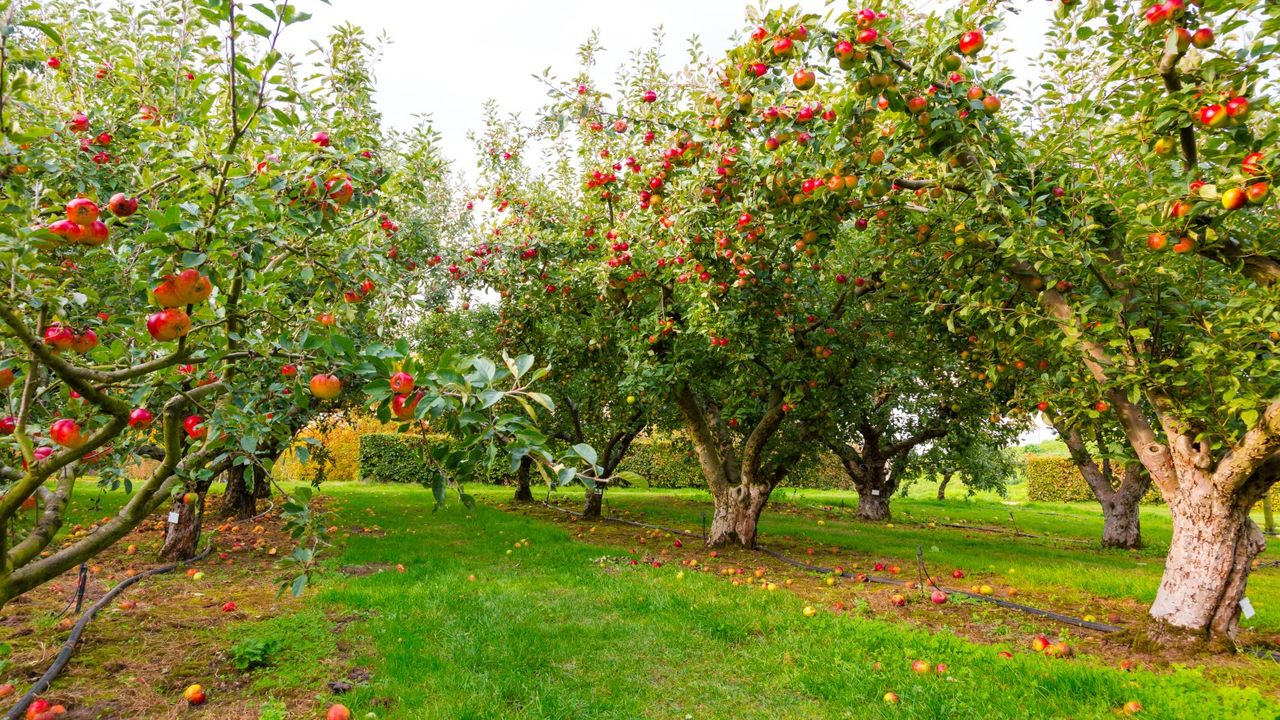Lifestyle
Discover Your Birth Month Fruit Tree: A Year-Round Guide

Celebrating each month of the year has taken on a personal twist with the concept of birth month fruit trees. These trees are associated with specific months, showcasing their beauty and bounty during the time they are linked to. While less formal than birth month flowers, these trees offer a delightful way to connect with nature and add a personal touch to gardens or indoor spaces.
Growing a fruit tree that corresponds to one’s birth month can create lasting memories and serve as a unique gift for loved ones. Below, we explore the significance and best practices for cultivating each of these twelve fruit trees.
January to June: Winter Blooms to Summer Harvests
Starting the year, January features the vibrant orange tree. In regions such as Florida and the Mediterranean, orange trees stand out with their bright fruit. It is important to harvest oranges only when fully ripe, as they do not continue to ripen post-harvest. For those in colder areas, the indoor calamondin dwarf tree is a manageable option that requires ample sunlight and humidity.
In February, the almond tree bursts into bloom, showcasing delicate pink-white flowers. This tree thrives in U.S. hardiness zones 7-9, particularly in California. Planting should occur in the fall for optimal establishment. For gifts, almond seeds or fragrance oils can be delightful choices.
As spring approaches in March, plum trees adorn themselves with charming blossoms. The American plum is particularly noted for its showy display and can grow in hardiness zones 3-8. Ensuring proper pruning and fertilization can enhance fruit production.
April brings the celebrated cherry tree, known for its stunning blossoms. Japanese flowering cherries are easy to maintain, while sweet cherry varieties provide delicious fruit. Pruning in late summer allows for rejuvenation ahead of the next bloom.
May is the month of the apple tree, which showcases a delightful array of pink and white blossoms. These trees attract pollinators, making them vital for the ecosystem. Dwarf apple varieties, such as the ‘Tangy Green’ columnar tree, cater to those with limited garden space.
June ushers in mulberry trees, which are noted for their clusters of red and purple berries. Hardy across zones 4-10, these trees can thrive in pots, making them suitable for sunny patios. Regular pruning in late winter encourages healthy growth.
July to December: Warmth and Harvesting
In July, peach trees reach their peak, offering sweet, fragrant fruit. Growing peaches can be challenging, especially in greenhouses that provide the necessary warmth and humidity. Varieties from trusted sources like Nature Hills can help aspiring gardeners succeed.
As summer wanes, August is fig time, with trees producing delicious fruits ready for harvest. These trees flourish in warm climates, particularly zones 7-10. Proper watering and fertilization are essential to avoid complications like root rot.
In September, the medlar tree becomes notable for its unique fruit. This lesser-known tree transitions into autumn colors while bearing fruit that ripens in an unusual manner—almost appearing overripe before it is ready to eat.
October is synonymous with pears, marking a busy harvesting season. Pear trees can grow in zones 4-9, and harvest time occurs when the fruit lightens in color. Utilizing potassium-rich fertilizers can enhance fruit quality.
November celebrates the pomegranate, a striking fruit that adds vibrancy to the fall landscape. When growing pomegranates, seeds must be cleaned and planted in well-draining soil with ample sunlight.
Lastly, December features the olive tree, which is traditionally harvested from late fall to early winter in Mediterranean regions. While challenging to grow in milder climates, indoor olive trees can serve as ornamental plants, showcasing their beautiful silver leaves.
For those looking to cultivate their birth month fruit tree, it is crucial to follow proper planting and pruning techniques. Resources are available to assist with these processes, ensuring successful growth and enjoyment for years to come.
Exploring the world of birth month fruit trees not only enriches personal gardens but also offers a meaningful connection to nature and the changing seasons.
-

 Top Stories4 weeks ago
Top Stories4 weeks agoNew ‘Star Trek: Voyager’ Game Demo Released, Players Test Limits
-

 World4 weeks ago
World4 weeks agoGlobal Air Forces Ranked by Annual Defense Budgets in 2025
-

 World4 weeks ago
World4 weeks agoMass Production of F-35 Fighter Jet Drives Down Costs
-

 Science4 weeks ago
Science4 weeks agoTime Crystals Revolutionize Quantum Computing Potential
-

 World4 weeks ago
World4 weeks agoElectrification Challenges Demand Advanced Multiphysics Modeling
-

 Business4 weeks ago
Business4 weeks agoGold Investment Surge: Top Mutual Funds and ETF Alternatives
-

 Top Stories4 weeks ago
Top Stories4 weeks agoDirecTV to Launch AI-Driven Ads with User Likenesses in 2026
-

 Lifestyle4 weeks ago
Lifestyle4 weeks agoDiscover Reese Witherspoon’s Chic Dining Room Style for Under $25
-

 Entertainment4 weeks ago
Entertainment4 weeks agoFreeport Art Gallery Transforms Waste into Creative Masterpieces
-

 Health4 weeks ago
Health4 weeks agoGavin Newsom Critiques Trump’s Health and National Guard Plans
-

 Business4 weeks ago
Business4 weeks agoUS Government Denies Coal Lease Bid, Impacting Industry Revival Efforts
-

 Science4 weeks ago
Science4 weeks agoRemembering David E. Brest: A Life Dedicated to Nature and Family









